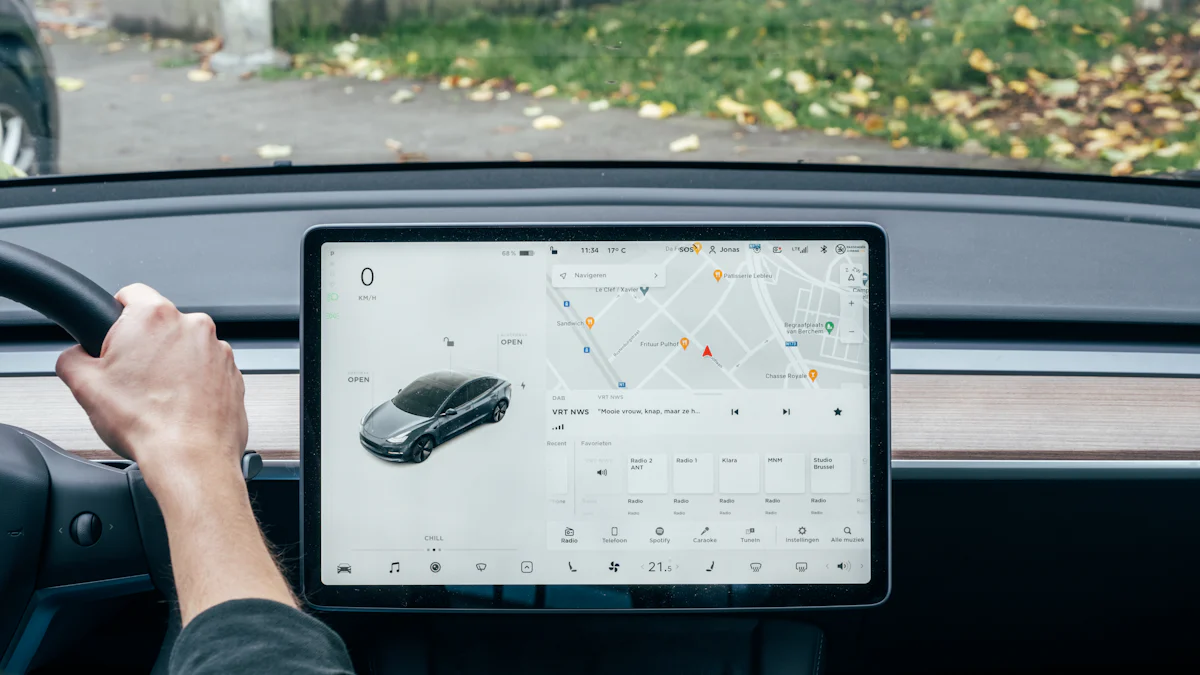Modern vehicles increasingly serve as sophisticated driving partners, equipped with advanced technologies designed to enhance safety and prevent accidents. Among these innovations, Lane Departure Warning (LDW) systems stand out as a crucial safety feature that helps prevent one of the most common types of accidents. Understanding how these systems work, when to rely on them, and when to be more cautious can make the difference between helpful assistance and dangerous overreliance.
The Technology Behind the Warnings
Picture having a vigilant observer constantly watching the road markings beneath your vehicle. Lane departure warning systems use specialized cameras, typically mounted near the rearview mirror, to continuously monitor lane markings on both sides of your vehicle. These cameras capture dozens of images per second, while sophisticated image processing algorithms analyze these images in real-time to determine your vehicle’s position relative to lane boundaries.
Much like human vision, these systems must cope with varying light conditions, weather patterns, and road surfaces. Modern systems employ advanced artificial intelligence techniques to recognize different types of lane markings, from solid lines to dotted patterns, and even detect road edges when traditional markings become unclear. This adaptability proves crucial for reliable operation across diverse driving conditions.
The Warning Process
When your vehicle begins drifting toward a lane boundary without an activated turn signal, the system springs into action. Different manufacturers implement various warning methods, from subtle steering wheel vibrations that mimic rumble strip sensations to audible alerts or visual warnings in the instrument cluster. Some advanced systems even provide haptic feedback through the seat bottom, creating an intuitive warning that doesn’t startle the driver.
Understanding the timing of these warnings helps appreciate system operation. Most systems activate their warnings when your vehicle approaches within a specific distance of lane markings, typically calculating this threshold based on your current speed and steering inputs. This dynamic adjustment helps provide timely warnings without causing alert fatigue through excessive notifications.
System Limitations and Environmental Factors
Like human vision, lane departure systems face challenges in certain conditions. Heavy rain can obscure lane markings, while snow coverage can completely hide them. Bright sunlight, particularly during sunrise or sunset, might temporarily blind camera sensors. Understanding these limitations helps drivers maintain appropriate vigilance when conditions might affect system reliability.
Road construction zones present particular challenges, as temporary lane markings might confuse the system or conflict with permanent markings. Similarly, areas with recent road work might retain ghost marks from removed lane lines, potentially creating confusion for both human drivers and electronic systems. Recognition of these situations helps drivers know when to rely more heavily on their own judgment.

The Role of Lane Keeping Assist
Many modern vehicles pair lane departure warning with lane keeping assist systems, which can actively help maintain proper lane position. These systems typically provide gentle steering corrections when drift is detected, though they require drivers to maintain hands on the steering wheel. Understanding the distinction between warning and assistance features helps set appropriate expectations for system behavior.
The technology behind lane keeping assist proves particularly fascinating. These systems must carefully calibrate their responses to provide helpful correction without being too aggressive or causing driver discomfort. The algorithms consider factors like vehicle speed, road curvature, and steering input patterns to determine appropriate correction levels.
When to Trust the System
Optimal use of lane departure warning requires understanding when the system operates most reliably. Clear weather conditions with well-maintained road markings present ideal circumstances for system operation. Highway driving, with its consistent lane markings and gradual curves, typically allows these systems to perform at their best. Under these conditions, the system serves as a reliable partner in maintaining safe lane position.
However, drivers should maintain heightened awareness in challenging conditions. Urban environments with frequent lane merges, complex intersections, or faded markings might reduce system reliability. Similarly, adverse weather conditions that affect visibility or road surface conditions warrant increased driver attention regardless of system capabilities.
Maintenance and Calibration Considerations
Keeping lane departure systems operating properly requires understanding their maintenance needs. The camera must remain clean and properly aligned for reliable operation. Windshield replacement often necessitates system recalibration, as even slight changes in camera position can affect system accuracy. Regular system testing helps ensure proper operation when needed.
Professional calibration proves particularly important after any work that might affect camera alignment. This includes windshield replacement, suspension modifications, or collision repairs. Understanding the importance of proper calibration helps ensure system reliability and optimal performance.
Looking Toward the Future
Lane departure technology continues evolving rapidly. Newer systems incorporate additional sensors and more sophisticated algorithms to improve reliability across diverse conditions. Some systems now learn from driver behavior patterns, adjusting their sensitivity and warning types to better match individual preferences while maintaining safety margins.
Machine learning advances promise even more capable systems in the future. These improvements might include better adaptation to unusual road conditions and more sophisticated integration with other vehicle safety systems. Understanding current capabilities while staying informed about emerging technologies helps drivers make informed decisions about system use and trust levels.
The Human Factor
Even the most sophisticated lane departure systems serve as assistance features rather than replacement for attentive driving. Understanding system capabilities and limitations helps drivers maintain appropriate vigilance while benefiting from this important safety technology. Regular system familiarization and staying informed about specific vehicle capabilities ensures optimal use of these advanced safety features.
















Add Comment